12 Groundcovers That Spread Nicely in Cool Weather
Groundcovers are a great way to enhance your garden, especially in cooler months. These plants not only help fill in bare spots but also create a lovely, low-maintenance landscape. Many groundcovers thrive when temperatures drop, spreading quickly and efficiently. Some are perfect for shady areas, while others do well in full sun.
This post may contain affiliate links, which helps keep this content free. Please read our disclosure for more info.
Ajuga (Bugleweed)

Ajuga is an excellent choice for cool-weather groundcover, especially in shaded areas. Its dark green foliage often has a hint of purple, providing a rich contrast against other plants. Ajuga forms dense mats that spread quickly, making it ideal for filling gaps in the garden. In spring, this groundcover also produces spikes of blue flowers, adding beauty and interest.
This plant thrives in well-drained soil and can tolerate partial to full shade. Ajuga is low-maintenance, making it a favorite for gardeners looking for an easy solution. It is also a great option for preventing soil erosion, as it forms a thick layer. Be sure to trim back the flowers once they fade to keep the plant looking tidy.
Creeping Thyme
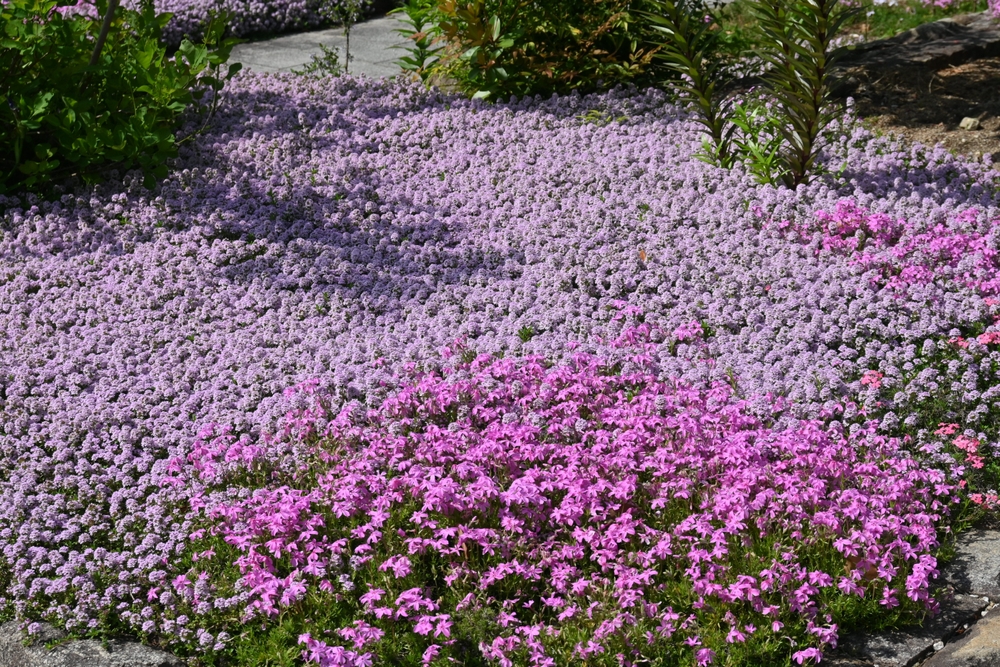
Creeping thyme is a hardy groundcover that thrives in cooler temperatures. Known for its fragrant leaves, it also produces small pink or purple flowers in spring and summer. This low-growing herb spreads quickly, making it perfect for between paving stones or as a lawn substitute. It loves full sun but can tolerate some shade, especially during the cooler months.
This groundcover is drought-tolerant once established, so it does not require much water. Creeping thyme is ideal for areas where foot traffic is light, as it can withstand some wear. It is also attractive to pollinators, such as bees and butterflies. To maintain its health, simply trim it back after flowering to encourage new growth.
Wintercreeper (Euonymus fortunei)
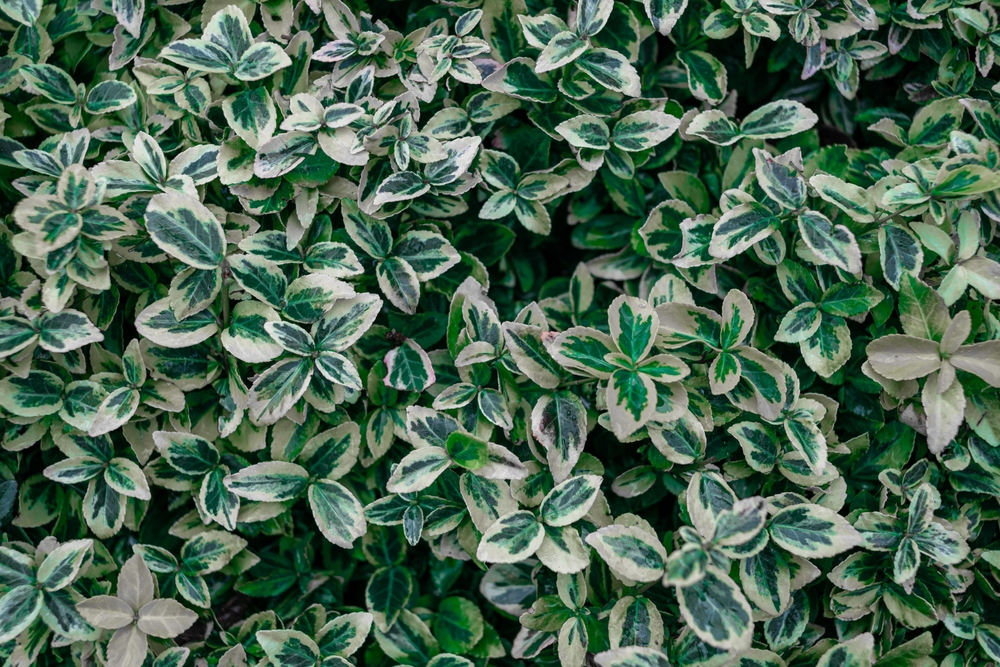
Wintercreeper is an evergreen groundcover that keeps its vibrant green leaves even in colder temperatures. It thrives in full sun to partial shade and spreads quickly, making it an excellent choice for covering large areas. This plant’s low-growing habit makes it ideal for slopes or areas that need erosion control. In cooler months, its foliage can develop a reddish hue, adding seasonal color to the garden.
Wintercreeper is known for its ability to tolerate a variety of soil types, from clay to sandy soils. While it is hardy in many conditions, it can be invasive in some areas, so it is important to monitor its growth. Regular pruning helps keep it in check. It can be used to fill in areas between shrubs or around the base of trees.
Ground Morning Glory (Convolvulus sabatius)

Ground morning glory is a versatile groundcover that thrives in cool weather and can handle light frost. It forms a dense mat with its small, dark green leaves and stunning blue flowers. This plant spreads quickly, covering large areas with ease, and blooms profusely in the spring. It is ideal for ground cover as it provides both beauty and coverage.
This variety of morning glory can handle partial to full sun, though it will appreciate some afternoon shade during the hottest months. It prefers well-drained soil and is fairly drought-tolerant once established. Ground morning glory can also be used in hanging baskets, adding visual interest to any outdoor space. It is a good choice for gardeners looking for a colorful, low-maintenance option.
Sweet Woodruff (Galium odoratum)

Sweet woodruff is an aromatic groundcover that thrives in cool, shaded areas. Its small, star-shaped white flowers bloom in the spring, filling the air with a subtle fragrance. This perennial spreads quickly through rhizomes, forming a dense mat that is perfect for creating a lush carpet in shaded gardens. It works particularly well under trees or along the edges of pathways.
This plant prefers moist, well-drained soil and can tolerate some dryness once established. Sweet woodruff is an excellent groundcover for woodland gardens and helps keep weeds in check. It can also be used as a companion plant to help retain moisture in the soil. Regular trimming helps maintain its compact form.
Clover (Trifolium repens)
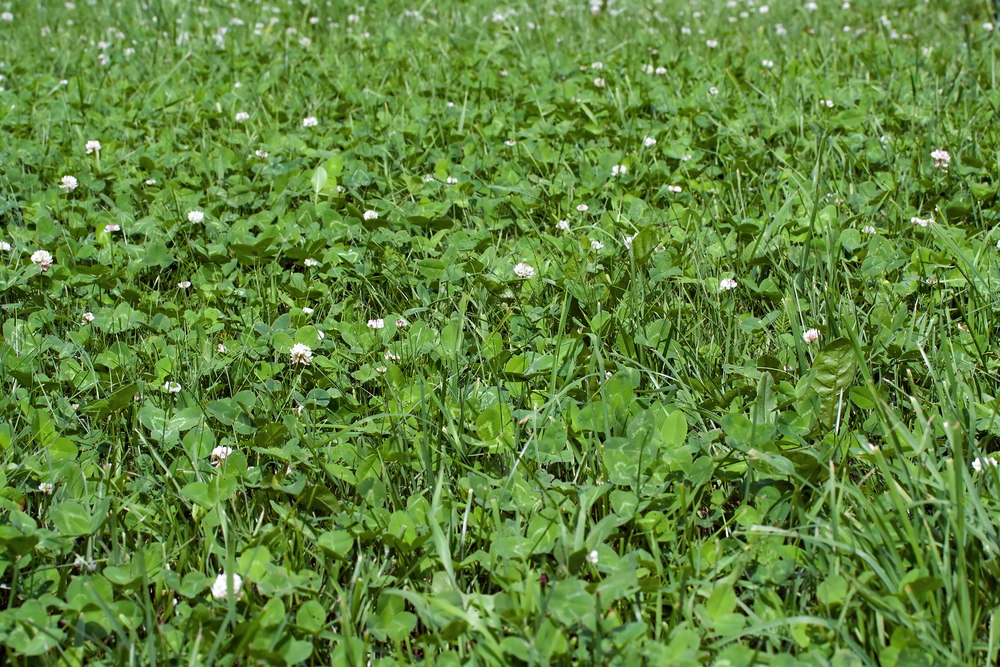
Clover is a fast-growing, low-maintenance groundcover that thrives in cool weather. It is often used as a lawn alternative due to its ability to spread quickly and cover large areas. Clover produces small white or pink flowers that attract pollinators, making it a great addition to a wildlife-friendly garden. It can be planted in both sunny and partially shaded areas.
This groundcover is drought-tolerant and can grow in a variety of soil types, making it versatile for many gardens. Clover is also a nitrogen-fixer, improving soil quality naturally. It does not require frequent mowing, though it can benefit from occasional trimming. It spreads easily by seed, making it a budget-friendly option for large areas.
Groundcover Hosta
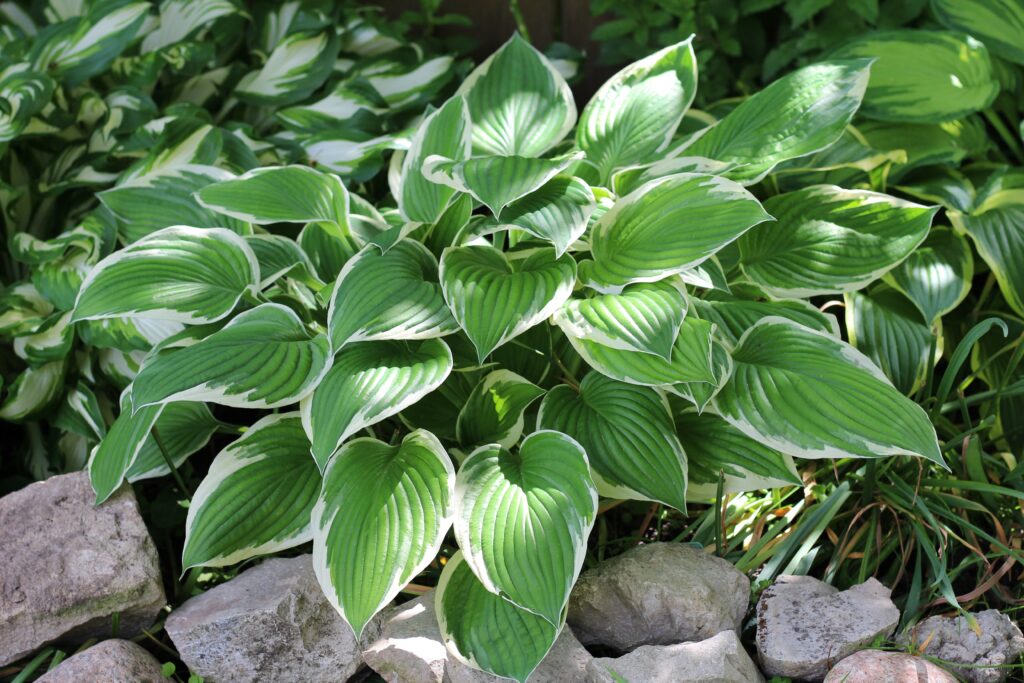
Hostas are a popular choice for shaded gardens, offering lush foliage that spreads nicely over time. This plant comes in a variety of sizes and leaf colors, from deep green to variegated shades of yellow and white. Groundcover hostas are especially valued for their ability to create dense, weed-free patches in the garden. They are also perfect for areas that do not receive much direct sunlight.
Hostas prefer moist, well-drained soil and thrive in cool to moderate climates. Their broad leaves can provide a soft texture to contrast with other plants. Though they bloom in the summer, it is their foliage that offers the most year-round interest. Hostas are low-maintenance and only require occasional watering and pruning.
Periwinkle (Vinca minor)

Periwinkle is a fast-growing groundcover that thrives in both sun and partial shade. It is an evergreen plant, so it maintains its vibrant green leaves throughout the cooler months. In spring, periwinkle produces beautiful purple or blue flowers, adding a touch of color to the landscape. Its spreading habit makes it ideal for covering large areas or for planting around the base of trees.
This groundcover grows well in well-drained soil and can tolerate a variety of conditions, from drought to light frost. Periwinkle is low-maintenance, requiring little more than occasional pruning to keep it from becoming too invasive. Its ability to quickly fill empty spaces makes it an excellent choice for creating ground coverage. Periwinkle is also great for controlling erosion on slopes.
Creeping Jenny (Lysimachia nummularia)
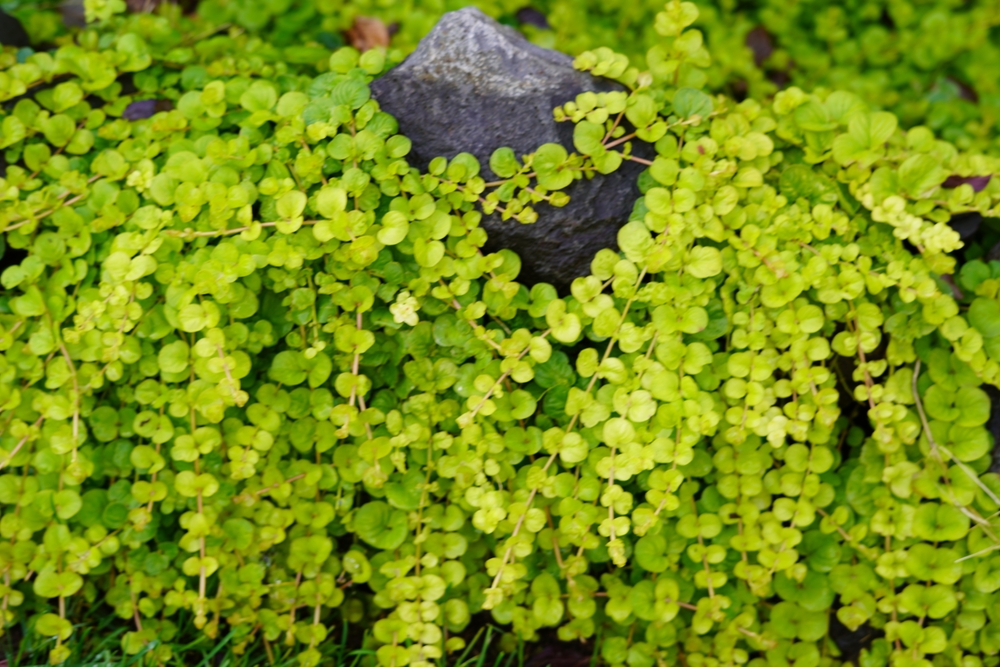
Creeping Jenny is a vibrant groundcover that thrives in cool weather, spreading quickly across the garden. Its rounded green leaves often take on a yellow hue in the cooler months, adding bright color to the landscape. This low-growing plant is perfect for filling in gaps or covering large areas, and it works well in both sun and partial shade. Creeping Jenny also produces small yellow flowers in late spring and early summer.
This plant prefers moist, well-drained soil and will spread quickly through its creeping stems. Creeping Jenny is versatile, as it can be used in hanging baskets or as a border plant. It is also effective at controlling soil erosion. Regular trimming helps keep it neat and compact, especially when it begins to spread into areas where you do not want it.
Blue Star Creeper (Isotoma fluviatilis)
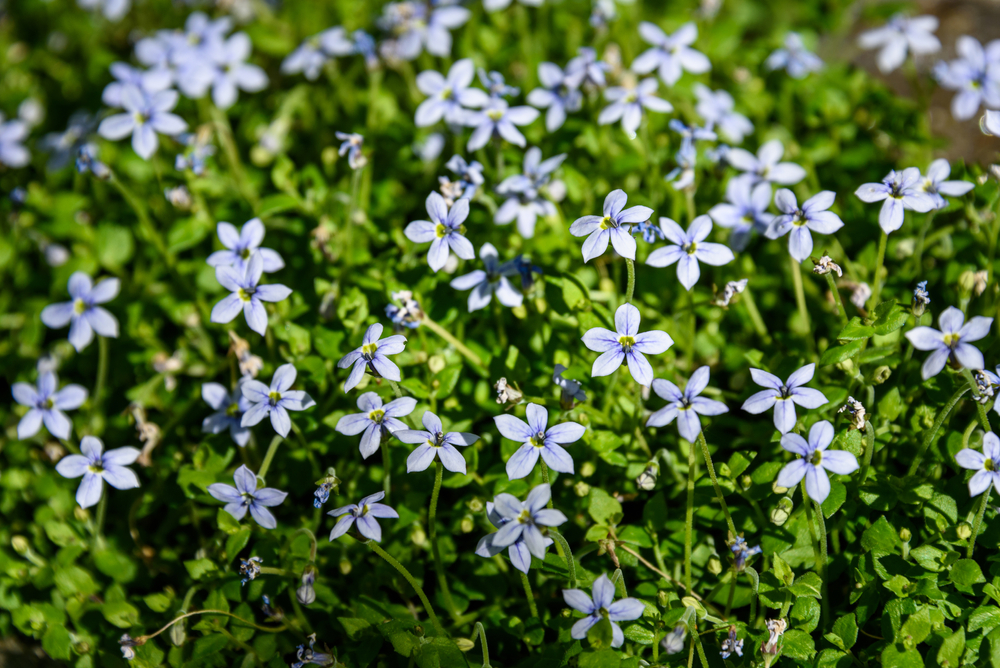
Blue star creeper is a fast-spreading groundcover that works well in cooler climates. This plant has small, star-shaped blue flowers that bloom in late spring, creating a beautiful carpet of color. It is perfect for areas between stepping stones, walkways, or as a lawn substitute. The leaves are small and dense, forming a tidy mat.
This plant thrives in full sun to partial shade and is tolerant of drought once established. Blue star creeper is low-maintenance, needing only occasional watering and light trimming to keep it in shape. It is an excellent option for filling in areas that need consistent ground coverage. The tiny blue flowers are attractive to pollinators, adding extra value to the garden.
Lamb’s Ear (Stachys byzantina)
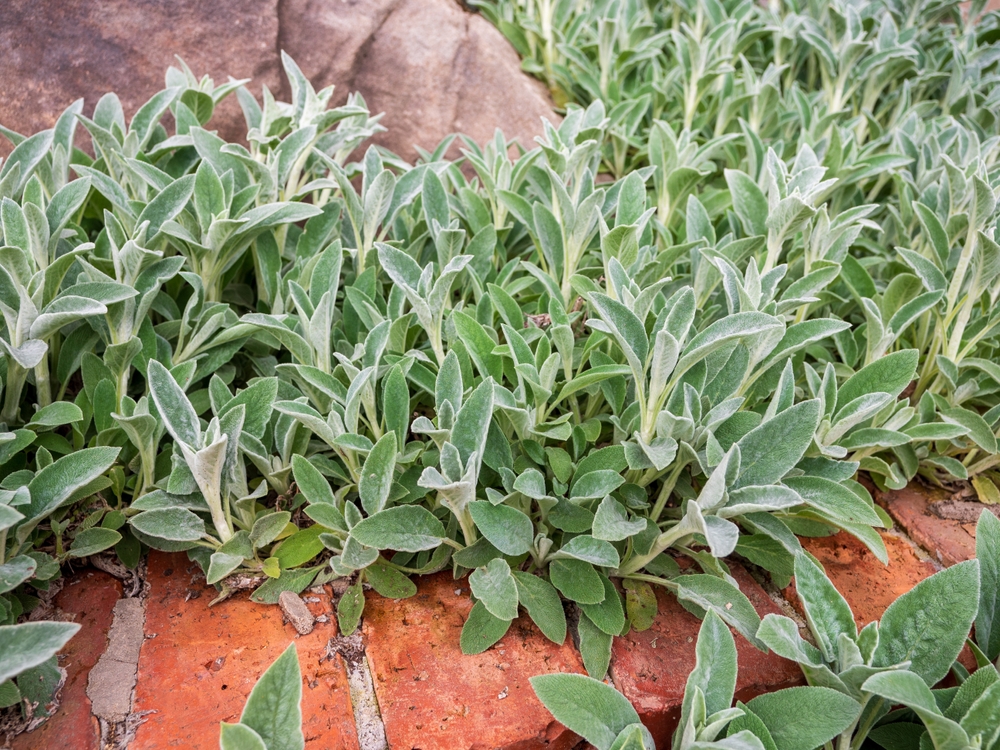
Lamb’s ear is a soft, silvery groundcover known for its fuzzy, wool-like texture. It thrives in cool weather and grows well in well-drained soil with full sun or partial shade. This perennial spreads easily, creating a dense mat that is perfect for filling in garden beds. Its silvery foliage provides year-round interest, especially when it contrasts with darker plants.
Lamb’s ear is drought-tolerant once established, making it an easy-care groundcover for most gardens. It does well in dry conditions but will thrive with occasional watering. The plant also produces purple spiky flowers in the summer, though it is mostly grown for its unique texture. Pruning back the flower stalks will help maintain its compact form.
Sedum (Sedum spp.)
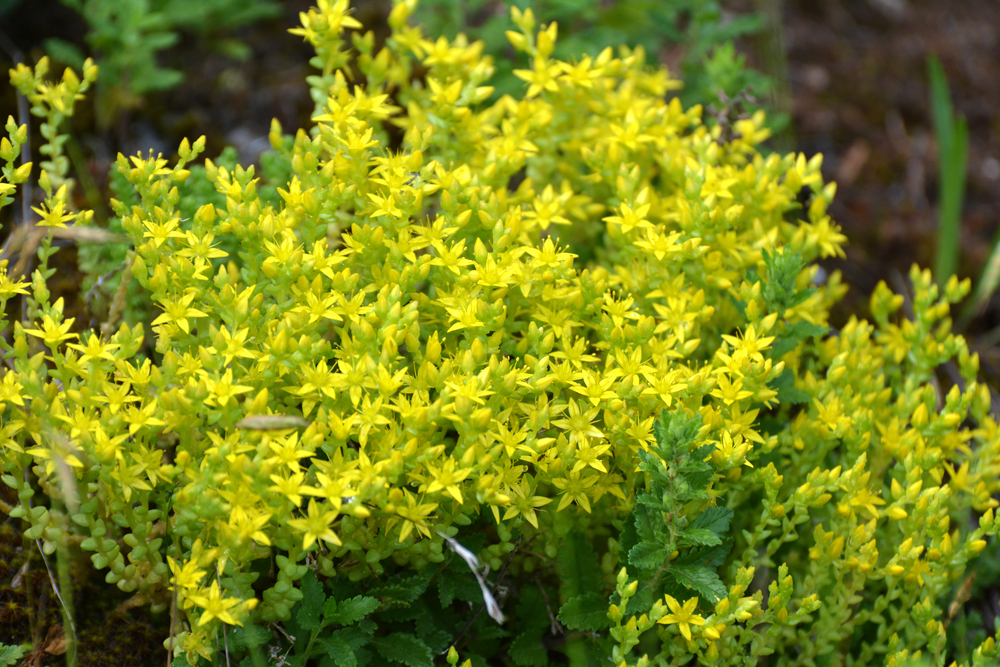
Sedum, commonly known as “stonecrop,” is a drought-tolerant groundcover that flourishes in cooler weather. It produces clusters of small, star-shaped flowers in late summer and fall, attracting pollinators like bees and butterflies. Sedum spreads quickly and is excellent for filling in dry, sunny spots in the garden. Its thick, fleshy leaves help retain moisture, making it an ideal choice for low-water gardens.
This plant thrives in well-drained soil and can handle dry conditions better than most. Sedum is a hardy plant that can withstand both cold temperatures and heat. It is also useful for preventing erosion on slopes. For optimal growth, ensure it receives plenty of sunlight, as it will not do well in full shade.
This article originally appeared on Avocadu.
